As thousands of protesters funneled along Pennsylvania Ave. in Washington, D.C., for the March for Our Lives on Saturday, carrying signs and children and the weight of fear and grief over gun violence, there was another, small revolution taking place at the edge of the march route, in tiny Pershing Park. That’s where about 100 activists from the New York City–based group Gays Against Guns (GAG) had set up camp for the day, transforming the bleak concrete corner with a huge rainbow banner and pink Mylar strips that billowed in the breeze.
Also part of the staging was some much-needed levity: a pink-carpeted runway, with folks in drag encouraging passersby to show the NRA, in RuPaul parlance, how to “sashay away.” Later, a large group struck a more somber tone by wearing all white, having their faces covered with veils, each carrying the photo, name, and short bio of a person who had been lost to gun violence. The silent procession of “human beings” stopped marchgoers in their tracks.
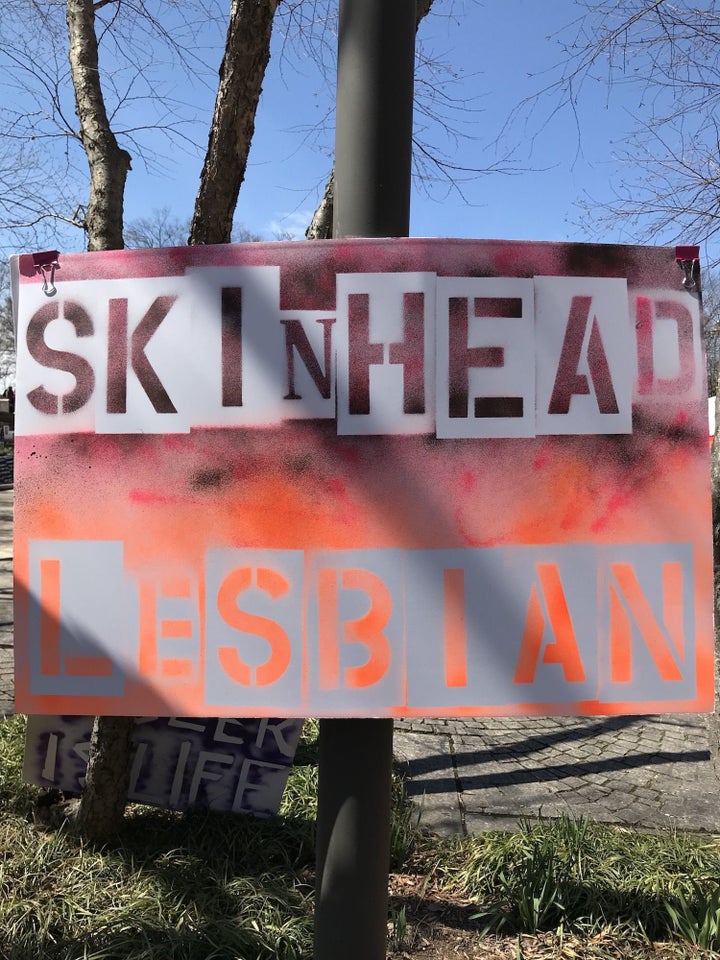
Surrounding the activists throughout the day were colorfully spray-painted signs, declaring “Not in my school,” “Stop trans murder,” “NRA be gone, before we drop the House on you” (a pitch-perfect “Wizard of Oz” reference), and the pièce de résistance: “Skinhead lesbian.”
It was, of course, the reclamation of an insult hurled by a Maine legislative candidate toward a magnetic leader of this movement: Emma González, the buzzed-headed student who emerged onto the national stage just three days after the deadly Feb. 14 shooting at her Marjorie Stoneman Douglas High School in Parkland, Fla.
That’s when González’s riveting 11-minute “we call BS” speech went viral, energizing a segment of the nation that had had enough of gun violence and catapulting a crew of similarly smart, tenacious Parkland students into an instant media spotlight.
People soon tweeted that González should run for president. The 18-year-old noted that she already is president — of her school’s Gay-Straight Alliance (GSA). She then told the Washington Post that she identifies as bisexual, and suddenly her fierce badassery just made that much more sense for a whole lot of people, particularly fellow LGBTQ folks and queer activists for whom self-identity and a willingness to stand up for justice have long been inextricably linked.“
We have always been on the defensive as a community. So it’s a natural fit. We have been fighting for our rights for decades, likely eons,” Cathy Marino-Thomas, a GAG organizer and longtime activist in the fight for marriage equality, tells Yahoo Lifestyle, referring to battles over AIDS funding, marriage equality, the right to adopt, the right not to be fired from work and to serve in the military, and a range of other hard-won civil rights. “I think that we are a community less afraid to stand up because, in many ways, we have less to lose and everything to gain. Historically, no one has ever stood up for the gays. We’ve had to stand up for ourselves, often against extraordinary opposition.”
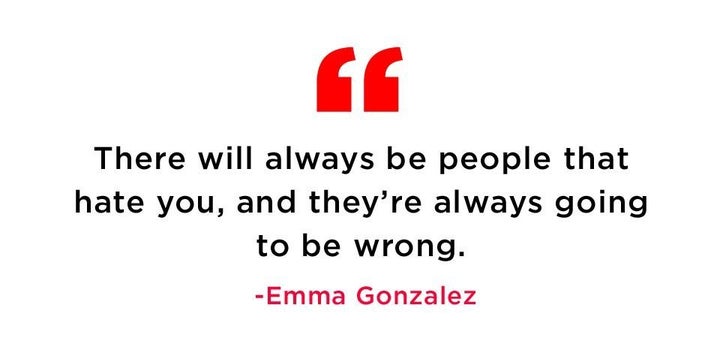
Of course, no one would deem this current antigun movement a singly gay issue — not even GAG, for whom the two narratives are tightly entwined. But there are deep and undeniable connections, made both collectively — such as by the Human Rights Campaign (HRC), the largest national LGBTQ-rights organization, which had a massive presence at the D.C. march led in party by Queer Eye co-host Karamo Brown, himself a graduate of Parkland’s Marjory Douglas Stoneman High School — and also made individually.
That goes for González, who tells Yahoo Lifestyle in the days leading up to Saturday’s march that she indeed sees a connection between her sexuality and her drive to lead the movement. “They’re definitely linked for me personally. If I wasn’t so open about who I was, I never would’ve been able to do this,” she says. “In ninth grade, I was in a creative writing class where I could actually really effectively communicate what I was feeling, and it especially helped me come to terms with who I was. That definitely was when I really understood who I am, and when I came to terms with it, and when I told most people.”
Being open, González says, “helped me understand that everybody, no matter who they are and what they look like, is going through a lot of different things.” And being her school’s GSA president for three years has fostered her activist skills.
“It’s really helped me get used to shifting plans very quickly, planning in advance, and also being flexible … understanding that maybe you organize a club meeting with this one person in mind and they just don’t come because they aren’t coming to school, and you can’t get upset,” she says. “Because most of the kids in GSA either have depression or they’re dealing with a lot of stuff at home, and I can understand that. And there are so many people in the country who are dealing with that, in relation to gun violence. You have no idea. You don’t know how many people you talk to on a daily basis that have actually been shot before, or have lost someone through gun violence. With GSA it’s the same. Everything’s incredibly far-reaching and widespread.”
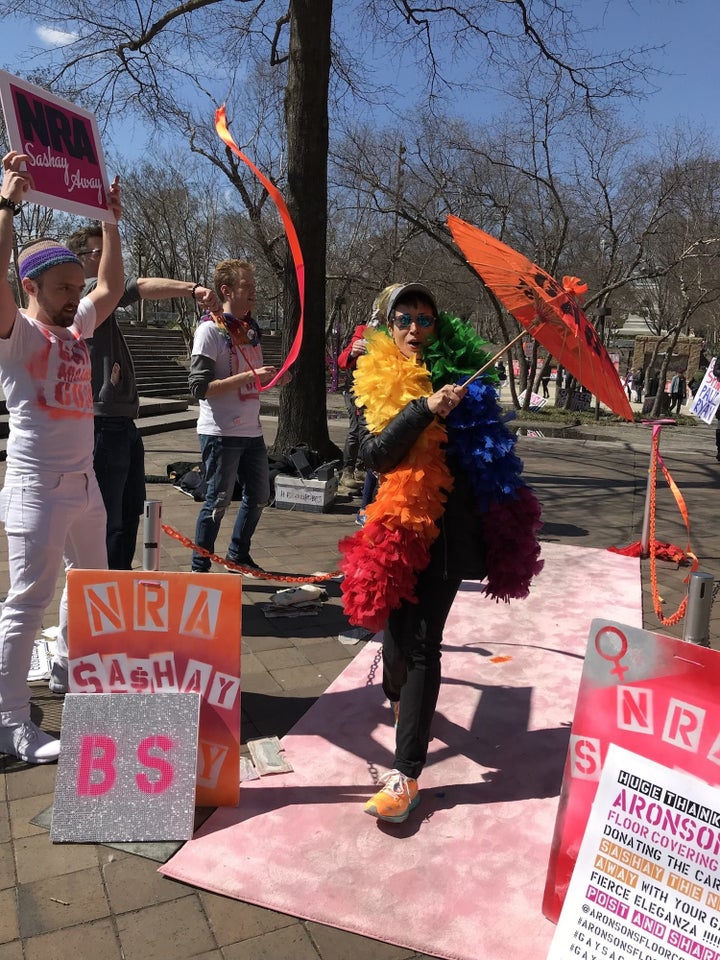
González recalls meeting Gays Against Guns representatives who had come to Parkland to show their support on the day her high school reopened after the shooting. “Yaass!” she says at the mention of the group, noting that she’d felt lucky for the haul of signs, fliers, buttons, and a parasol they gave her that day. But she reaches back further through gay history when she names her latest inspiration: transgender activist Sylvia Rivera, a veteran of the 1969 Stonewall uprising, widely known as the start of the gay-rights movement.
“There’s this clip of her getting up onstage at one of the Stonewall Pride rallies, a couple years [after the uprising], and … everybody boos her because she’s trans. But she’s like, ‘Are you kidding me? You’re gay. I’m trans. We’re part of this. Like, I got you here. How many times have I had to fight for you? And you’re booing me because I’m trans?’” the teen says. “First of all, it was so unfair, unjustified, undignified, like, I was so infuriated by seeing that. But then there’s just knowing that there will always be people that hate you, and that they’re always going to be wrong. So it’s good to use that, and remember that whatever you’re doing, if it’s making people that mad, then it’s probably a good thing.”
***
González, of course, is far from the only power behind the youth-led antigun movement and March for Our Lives; in the week leading up to the marches, she and the rest of the Parkland crew did a whirlwind media tour, landing, among other places, on the cover of Time, in the studio of “The Rachel Maddow Show,” and in a Teen Vogue series that included a story in its sister LGBTQ publication, Them, which announced in its headline, “Queer Teenage Girls are Leading the Gun Control Movement.”
Though it may have been a slight exaggeration (only González and classmate Sarah Chadwick have identified themselves as being part of the LGBTQ family), there is certainly a shared ethos within the youth-led resistance that makes it ring true. And as nonqueer Parkland student Jaclyn Corin noted in that story, “As things get more acceptable in society, like legalizing gay marriage and stuff like that, it shows us that a change from the beginning that seemed so far away can actually happen in the same lifetime. So that gives us hope. We’re kind of modeling this like the LGBT movement because, in retrospect, it’s the same. We’re working towards a common goal as a lot of people and it’s not party-oriented. That’s marriage, and this is lives.”
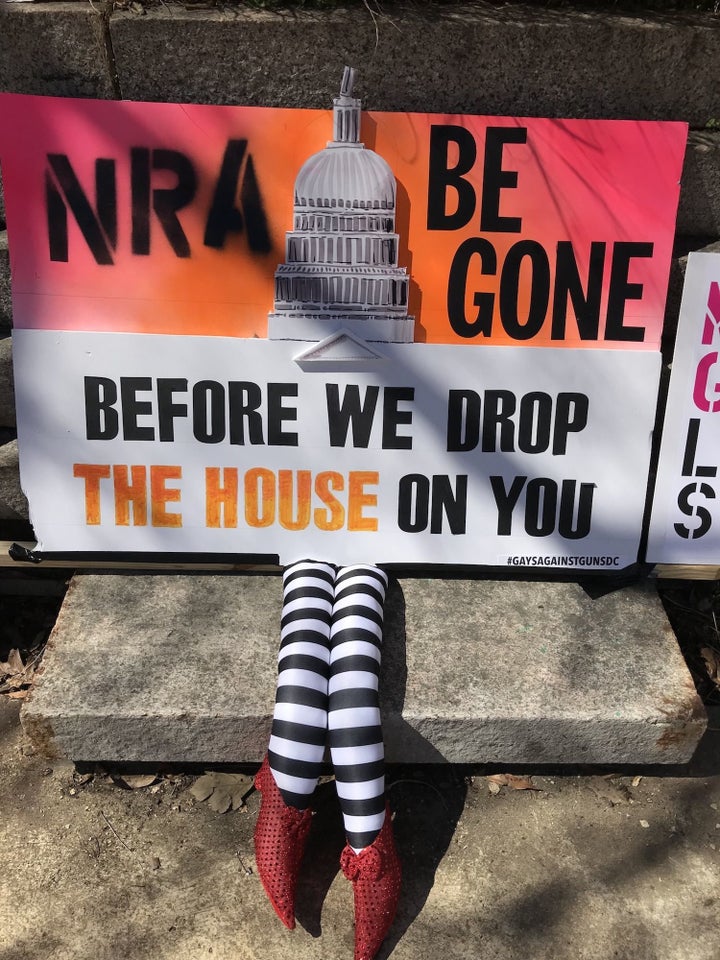
To longtime activist Evan Wolfson, whose Freedom to Marry campaign won the fight for national marriage equality in 2015 after a decades-long effort, that’s an apt parallel.
“It’s all taken from the Freedom to Marry playbook, where despite people saying that gay people can’t marry — the courts saying that, the culture saying that, even gay people saying that to ourselves — we didn’t take no for an answer, and by not taking no for an answer we turned the answer into yes,” Wolfson tells Yahoo Lifestyle the day before the March for Our Lives, which he had planned to join in New York City. “It’s what’s so inspiring about these young people and what they’re doing. … They believe they can create change and are inspiring millions more with that belief.”
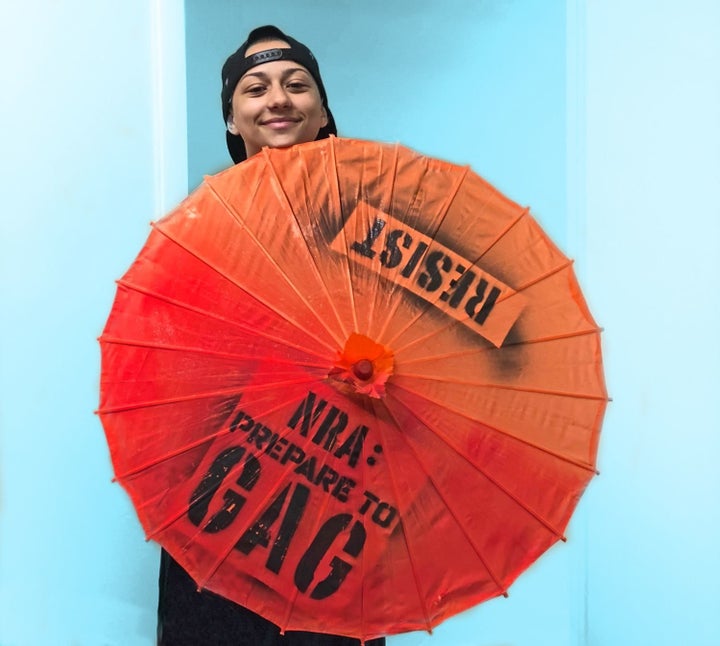
Wolfson now travels around the world to consult with activists on issues from antiviolence and immigration reform to environmental protection and animal rights. He notes that, when it comes to activists finding the fire in their bellies, “You can’t reduce something to just one identity, whether it be black or white or gay or non-gay or Jewish or Christian. Minorities have had an experience of exclusion, oppression, having to form solidarity and work for change … but we all have our something, and we have to draw on that something to make the world better.”
For Gays Against Guns, that something is twofold: queerness and, relatedly, being on the defensive when it comes to violence. As the group states on its website and in literature it passes out at protests, the LGBT community is disproportionately affected by gun violence: first, because most gun deaths in the U.S. are suicides and LGBTQ people are overrepresented among suicide victims (92 percent of transgender adults have attempted suicide by age 25); second, because LGBTQ people are the most likely minority to be the victim of a hate crime.
That really hit home with everyone on June 12, 2016, when the Pulse gay nightclub massacre in Orlando left 49 people dead in what was the most lethal mass shooting ever in America (though it was later surpassed by that of Las Vegas).
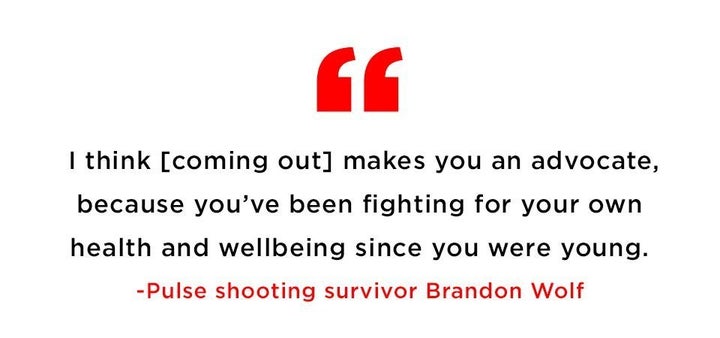
Gays Against Guns formed in response to that tragedy, with individuals from a newly outraged generation joining seasoned activists, some of whom were ACT UP organizers in the early days of the AIDS crisis, and who brought to the group their attention-grabbing direct-action skills — “die-ins,” chillingly clever chants, and sit-in-the-streets civil disobedience moves that often came with the goal of getting arrested. A week after its formation, GAG had a huge and heart-stopping presence in the New York City Pride March, with a contingent more than 750 strong chanting “Stop the NRA!” and staging die-ins all along Fifth Avenue; since then it has held direct-action protests and had a continued education-based presence at gun shows around the country.
“I think an intrinsic part of queerness is to have a certain feeling of being outside, and when you harness that, it’s very powerful,” says Kevin Hertzog, a founding member of GAG and someone who lived through the early AIDS crisis, losing many friends in the process. “When you’re dying, you’ll do anything,” he says on Saturday in D.C., referring to the basic connection between the early days of AIDS activism and the urgency behind today’s antigun movement. “It became apparent that no one was going to help us, so we had to help ourselves.”

As for González’s being queer, “It’s not incidental,” he says. “Some people are astonished that these kids were able to start this movement. But when you place it in a queer context? I’m not astonished at all.”
GAG co-founder Hal Moskowitz, who was a co-founder of the early AIDS organization Gay Men’s Health Crisis (GMHC), says, “I see some of me in [the Parkland activists]. I see that drive that says, ’F*** you, you’re going to listen to me, and I’m going to say it until you do.” Student David Hogg, who continuously acknowledges his place of privilege and speaks about the “children and people of color whose voices are not being heard,” has been particularly impressive, he adds.

Indeed, with Parkland, a largely white, affluent community known for its safety, the teens leading this cause have been particularly mindful of doing everything in their power to shift the narrative, from interview talking points to including students of color and from poorer communities in various ways. Nadine Smith, executive director of Equality Florida, a gay rights group, took note of that effort recently.
“I applaud the students for using the enormous platform they have to call out how racism and homophobia impact the response to gun violence. They see clearly the enormous difference in how Tallahassee responded to Parkland compared to Pulse,” Smith noted in a statement. “Legislators who had to be shamed into permitting a moment of silence for the 49 killed in Orlando quickly allocated funds for a memorial and passed legislation, flawed and incomplete though it is. When the GSA students, including Emma, spoke at our Gala in Miami, she made sure to lift up Pulse. [And] the students have gone to Chicago to meet with other students who have been organizing against gun violence for years to combine efforts.”
Brandon Wolf, who led the HRC contingent along with Queer Eye’s Brown in D.C. on Saturday, was at Pulse when the shots rang out; his friends Drew Leinonen and Juan Guerrero were killed. The experience, he says, turned him into an activist overnight. “I think the reason there’s this natural marriage of the LGBTQ community and a fight against this epidemic of gun violence is because there’s a very real fear from a young age as a gay person and specifically gay people of color that you will be targeted, harmed, or even worse because of who you are,” Wolfe, 29, tells Yahoo Lifestyle. “So there’s this natural sense of, we’ve got to protect ourselves and each other from that violence, and I think gay people know better than anyone else what it feels like to live in fear all the time.”
He adds, “I think as a young person, I went through so much, dealing with family and community and the process of coming out and all of that. And I think that makes you an advocate, because you’ve been fighting for your own health and well-being since you were young.”
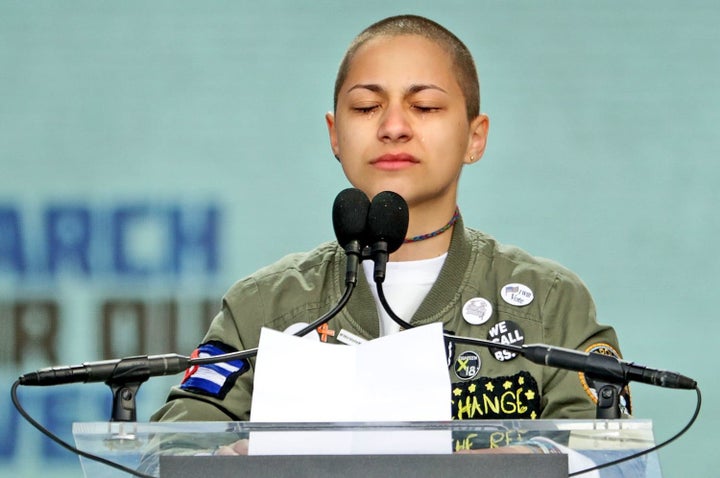
Now, as a whole new generation of young people grow up having to fight for their health and well-being in regard to gun violence, they are finding their own ways to make their voices heard and their demands met — with techniques both learned and instinctual.
“I think one thing we can learn from older generations of activists, which I’ve shared with the Parkland students, is the power of patience,” Wolf says. “We can let the older generation be a testament to the fact that hard work means we may not get it the first time around, but eventually we’ll get it — so to not get discouraged that the Florida legislature doesn’t care today, because the real change will be made when we vote them out for people who will make a change.”
On the other side, says González, is what her generation might teach the older ones (in addition to the power of social media, of course).
“One of the main things to be learned is that a lot of people kind of get pushed into an agenda, like Republican or Democrat. But the best way to get things done is to appeal to both sides, and listen, which is what we’ve been doing,” she says. “And this is not to knock anyone else, but what we’ve been really focused on is inclusion, and trying to really combine these communities spread around the United States. We’ve been trying to get everyone on the same page, to figure out what everybody’s asking for, and see if we can, as a giant movement, ask for that together.”
Read more from Yahoo Lifestyle:
